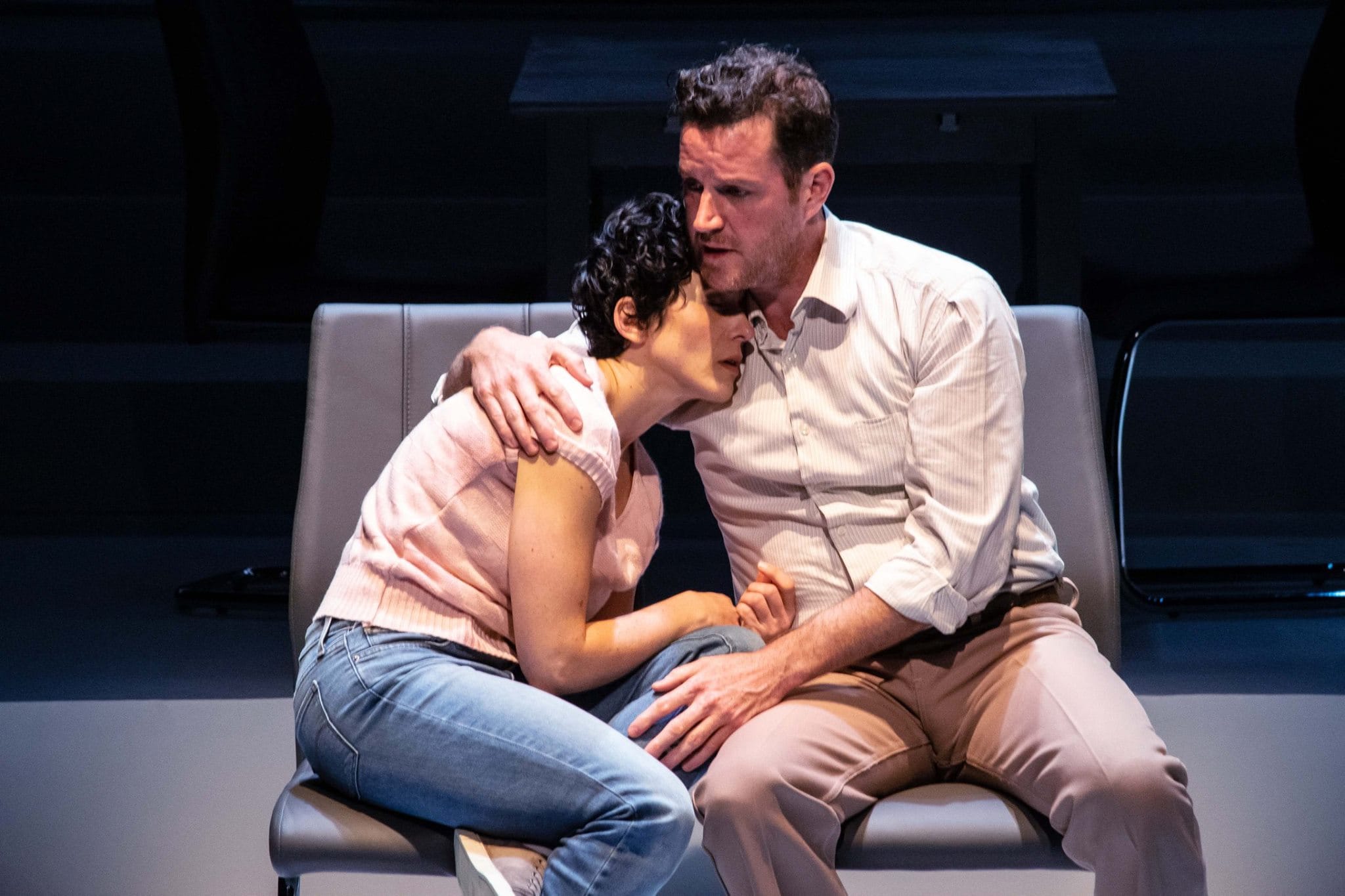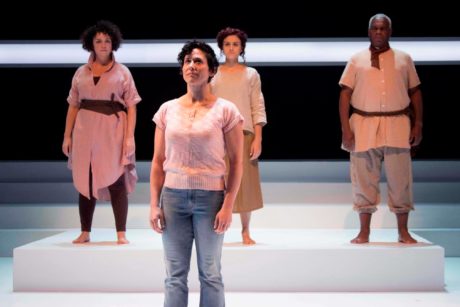Twenty years ago, Paula Vogel’s How I Learned to Drive shocked audiences with its holistic examination of pedophilia. It takes a village to molest a child, Vogel believes, not just a perpetrator and a victim. Today, in the swelling wake of the #MeToo movement, Round House Theatre’s searing new production of this Pulitzer Prize-winning play is sure to rattle us anew. This time we bring a whole new vocabulary to the discussion. Phrases like ‘moral equivalency’ and ‘alternative facts’ resonate on the nightly news. We also know a thing or two about how PTSD affects those who have suffered serial abuse.

All the decks are stacked against Li’l Bit, the central character of this quirky play set in southern Maryland in the 1960s. The daughter of a long-gone father and a resentful mother, she yearns for a strong male in her life – someone to counter the lewd misogyny of her grandfather, Big Papa. Claiming that his buxom granddaughter has all she needs to succeed in life, Big Papa derides Li’l Bit’s desire for education. Grandma fills Li’l Bit’s head with ugly tales of sex. Her mother and Aunt Mary, while offering occasional comic relief, provide sadly sexist advice on how girls can best get along in a testosterone-fueled world.
Into this moral and emotional vacuum slithers Uncle Peck, who at times appears nominally sane when contrasted to Li’l Bit’s dreadful relatives. Yet we watch in horror as his affection for Li’l Bit as a baby morphs into full-scale lust. When she is eleven, Peck takes his niece on a long car trip. In a secluded stop-off, he begins teaching her to drive.
It takes an exceptional cast to bring Vogel’s quirky play to life. On the one hand, the moral turpitude is so clear. On the other, Vogel insists that we peer into the rearview mirror, to learn why abusers abuse, and why victims experience such complicated reactions.
Round House has assembled a top-flight cast to explore the play’s nuanced shifts of power and blame. As Li’l Bit, Alyssa Wilmoth Keegan brings spunk and gravitas to her role. She recalls her uncle’s gentle but insistent assaults in bits and pieces – not always in chronological order – as we now know is typical of abuse victims. Keegan conveys vulnerability and agency, defiance, desire, revulsion, curiosity, and a coquettishness that is often at odds with her innate if battered, moral compass. She ages effortlessly from age 11 to 35, the point at which she has perspective on what happened to her – and to him.
Peter O’Connor excels as Uncle Peck – an often gentle, tragically flawed, and delusional middle-aged man who believes himself to be more of a savior than a savage. He prides himself in never pushing Li’l Bit too far, even as his lurking menace overshadows her childhood and climaxes on her 18th birthday. O’Connor uses astute body language, from the upright rectitude of a responsible adult teaching safe driving skills to the pathetic lurch that accompanies his shocking last offer.
Lest we think his pursuit of youngsters is limited to Li’l Bit, O’Connor does a fine narrative turn as the uncle to an unseen Cousin Billy, who he teaches to fish.
A trio of fine actors play The Greek Chorus who round out Vogel’s tale. The incredibly versatile Craig Wallace (Male Greek Chorus) spouts poisonous, profound ignorance as Big Papa and returns throughout the play as a bumbling teenager and a disdainful waiter standing watch over Peck’s debauchery. The forceful and funny Emily Townley (Female Greek Chorus) inhabits the cringe-worthy roles of both Mama and Aunt Mary with enormous depth. Daven Ralston (Teenage Greek Chorus) is both a hard-boiled Grandma and the plaintive voice of the pre-teen Li’l Bit. Director Amber Paige McGinnis knits these excellent performances together into an effective whole that moves along smartly without pause or drag during the entire one-act drama.

Scenic Designer Paige Hathaway adroitly uses the exceptional width of the Round House stage to best effect. A single broad neon band of light spans the stage, suggesting an open road but without a hint of destination. Projection Designer Jared Mezzocchi fills in the backstage with just enough imagery to loosely define time and place. Colin K. Bills’ lighting design provides both focus and narrative pause as time shifts throughout the play, and Amy Altadonna’s sound design reminds us of both the loping two-lane roads that crisscross southern Maryland and the rural atmosphere that prevailed before strip malls and industrial parks replaced farms.
The Round House staff clearly recognizes its unique responsibilities in reviving this play in 2018. At a time when truth is easily subverted and the abnormal is normalized, their ‘talkback’ schedule of post-play discussions will include not only members of the artistic staff and the audience, but also experts from various local organizations that support victims of sex crimes. Both the play, and these special sessions, are essential to our understanding of abuse.
Running time: One hour and 40 minutes. with no intermission.
How I Learned To Drive plays through November 4, 2018, at Round House Theatre – 4545 East-West Highway, in Bethesda, MD. For tickets, call the box office at 240-644-1100, or purchase them online.




